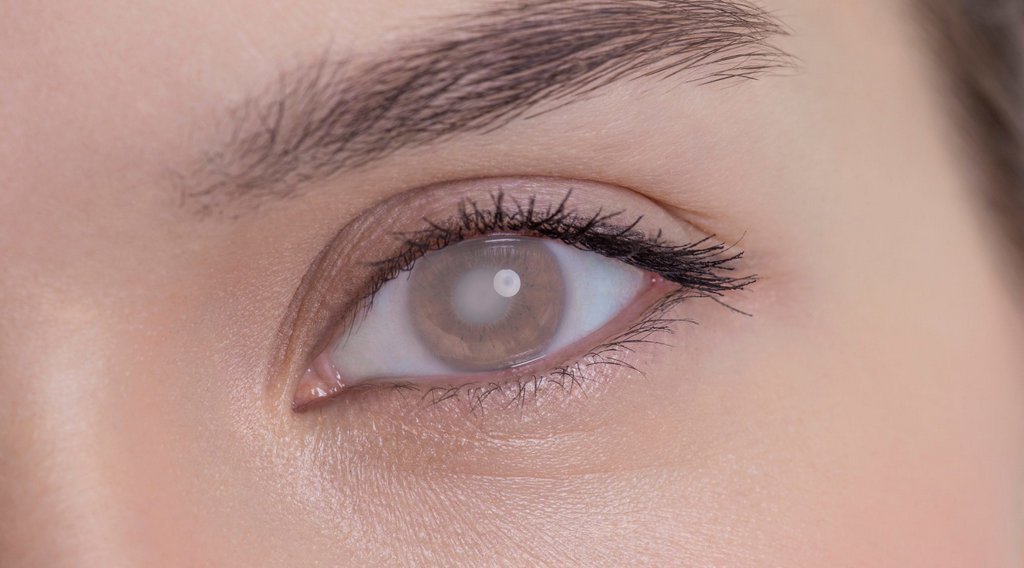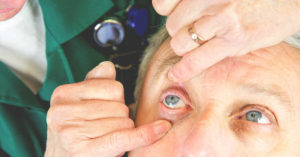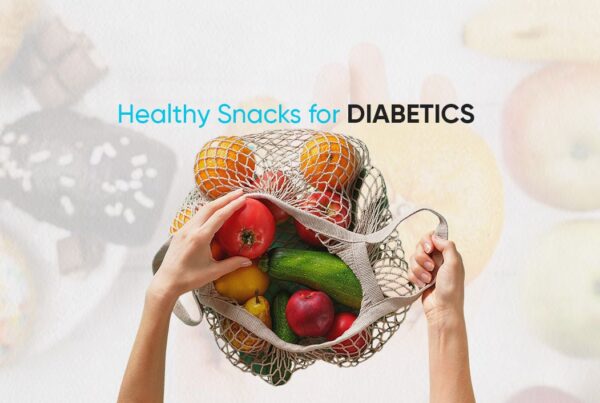CATARACTS IN DIABETES
A cataract is a dense, cloudy area that forms in the lens of the eye. It develops slowly and eventually interferes with your vision.
In other words; A cataract is a progressive, painless clouding of the natural, internal lens of the eye. Cataracts block the light and make it very difficult to see clearly. Over an extended period of time, cataracts can cause blindness. They’re often related to growing older, but sometimes they can develop in younger people also.
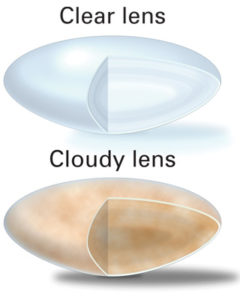
Vision problems with cataracts
If you have a cataract, your lens has become cloudy, like the above lens in the picture. It is like looking through a foggy or dusty car windshield. Things look blurry, hazy, or less colorful with a cataract.
What is a cataract eye in diabetes?
Diabetes is one of the key factors that result in the development of cataracts. Although the reasons why are still not fully understood, people with diabetes mellitus statistically face a 60% greater risk of developing cataracts. And also cataracts are one of the sight-related complications of diabetes that can cause misting or blurring of vision. Attending regular eye checks as part of your annual diabetic review will help your health team to identify any signs of cataracts at an early stage and advise on treatment
What causes cataracts?
Aging is the most common cause. This is due to normal eye changes that happen to start around age 40. That is when normal proteins in the lens start to break down. This is what causes the lens to get cloudy. People over age 60 usually start to have some clouding of their lenses. However, vision problems may not happen until years later.
The lens of the eye is made up of fluids that contain protein.
Over time this fluid may begin to cloud over, causing cataracts. Age is one of the factors and other factors include:
- Having diabetes
- Smoking
- A family history of cataracts
- Long periods of taking corticosteroids (any of a group of steroid hormones produced in the adrenal cortex or made synthetically. They have various metabolic functions and some are used to treat inflammation)
Vision Problems with Cataracts
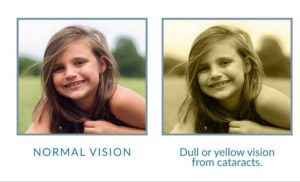
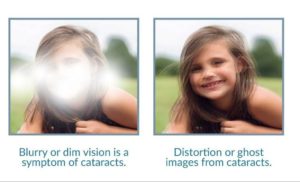
If you have a cataract, your lens has become cloudy, It is like looking through a foggy or dusty car windshield. Things look blurry, hazy, or less colorful with a cataract.
Cataracts Symptoms
SYMPTOMS
Here are some vision changes you may notice if you have a cataract:
- Having a blurry vision
- Seeing double (when you see two images instead of one)
- Being extra sensitive to light
- Having trouble seeing well at night, or needing more light when you read
- Seeing bright colors as faded or yellow instead
If you notice any of these cataract symptoms, notify your ophthalmologist.
Other reasons you may get cataracts are:
- Having parents, brothers, sisters, or other family members who have cataracts
- Having certain medical problems, such as diabetes
- Smoking
- Having had an eye injury, eye surgery, or radiation treatments on your upper body
- Having spent a lot of time in the sun, especially without sunglasses that protect your eyes from damaging ultraviolet rays
Cataracts and diet
- Fruits and Vegetables – Red strawberries, orange tangerines, yellow peppers, green kale, indigo blueberries, and purple eggplant? Try to choose organic fruit and eat the skins of fruits and vegetables since they are full of vitamins A, C, and E
- Whole Grains – Brown rice, bulgur, buckwheat, millet, oatmeal, popcorn, sorghum, quinoa, rye, and wheat. Some of these grains may be unfamiliar to you but are adventurous. Look up some recipes and try something new. You can also boost your eye health by making wiser choices when you purchase bread and other baked goods. Read food labels carefully, avoiding white bread and bakery items that contain refined grains and sugars
- Fish – Omega-3 fatty acids are also known to reduce the risk of cataract development and progression. Good sources of omega-3 fatty acids include shrimp, tuna, cod, salmon, halibut, trout, herring, walnut, flaxseed oil, canola oil, and spinach. Eat fish at least twice per week to nourish your eyes and protect your vision.
- Seeds and Nuts – Nuts and seeds are great sources of vitamin E, an antioxidant that helps protect the membranes of eye cells from free radical damage. Some of the best choices for eye health are almonds, walnuts, hazelnuts, peanuts, and sunflower seeds.

